Both antifreeze and coolant are used to protect your engine from damaging itself by either overheating or freezing. The term “Antifreeze” and “Coolant” are often interchangeably and for good reason.
Although you can call coolants “diluted antifreeze,” there are still some subtle differences between them. Here we will talk about the differences and similarities between antifreeze and coolant, how they work, and what you need to know to keep your engine working smoothly for long.
What is Antifreeze?
Antifreeze is a synthetic material that is used to lower the freezing point of water. They are usually made from ethylene glycol or propylene glycol base. The primary job of antifreeze is to make it harder for the molecules to crystallize by dropping the freezing point.
When water freezes, it expands in volume and can create enough pressure to damage your machine. That’s why antifreeze is used to protect your machine in cold temperatures.
What Is Coolant?
Basically, coolant is a solution made from antifreeze and distilled water. Coolants are generally used in engine/heater cores to absorb excess heat. Once it collects the heat, the coolant travels through the radiator and dissipates the heat to the outside air. It runs continuously through the system.
Usually, coolants are made from a 50/50 part of antifreeze and distilled water. So you can technically call it a diluted antifreeze. Coolants have a higher boiling point and lower freezing point than water. As a result, they provide exceptional temperature protection.
Antifreeze vs Coolant: Is There Any Difference?
Technically, no. You use them for similar implications. However, coolant is more powerful than antifreeze alone. As mentioned earlier, coolant is basically diluted antifreeze. The water is used to enhance the performance of the antifreeze by diluting.
The freezing point of antifreeze alone is 32°F (0°C). Also, it has no heat transfer capability. Once you mix that with water, the freezing point reaches -32°F (-35°C), and the substance gains impeccable heat transfer capability.
It also increases the boiling temperature of the liquid. Water boils at 212°F (100°C), but coolant can take up to 265°F(129°C) without being vaporized. How much water is to mix depends on the temperature. Usually, It’s a 50-50 solution, but it can also be 70% antifreeze in colder regions.
However, you can’t just dilute the antifreeze and use that in your system. Antifreeze contains corrosion inhibitors that can damage parts like your radiator. You should always follow your user manual’s instructions to select the best type of antifreeze/coolant for your vehicle.
How do they work?
The coolant collects heat from the core of your engine. Then it goes through the radiator and comes in contact with fresh, cool air. The coolant exchanges the heat and becomes cold. The antifreeze prevents the coolant from freezing.
Once the coolant is cold enough, it starts its journey to the engine’s core to collect heat and repeat the process all over again.
To be specific, the coolant usually sits idle inside your radiator. When you start the engine, the coolant gets pumped into the engine to absorb the heat. After soaking the heat in, the coolant heads back to the radiator and gets cooled by fresh air.
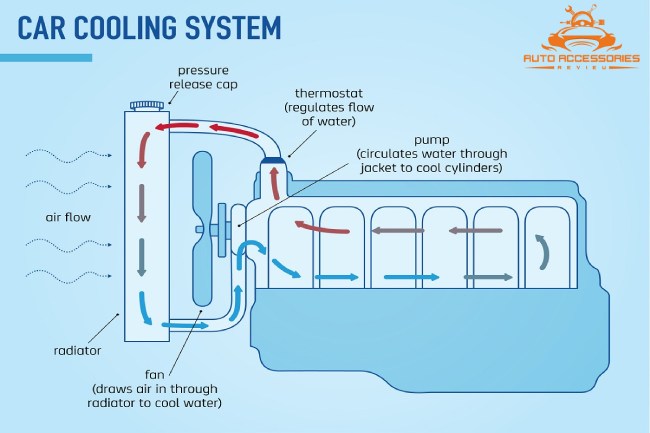
When you turn your heater on, some of the coolants are sent to your heater core. Once the heater core is hot enough to heat the air, the fan blows the hot air inside, and the coolant heads back to the radiator to start the cycle over again.
If you want to take a closer look at the process, check this video out:
However, using antifreeze directly will solve no problem. Coolant gets a power boost once it mixes with water and can work in extreme cold or heat.
When to change?
Usually, mechanics suggest changing your coolant every 30,000 miles or so. This will make sure that your engine will prevent corrosion and ensure proper temperature control throughout the system.
However, some manufacturers recommend changing your coolant first at 60,000 miles, and then after every subsequent 30,000 miles. The best way to find out the exact time to change your coolant is to go through your user manual, and we can’t stress this enough.
If you want, you can take a look at how to change coolant here:
Different colors of coolant
Coolants come in a wide range of colors implicating different applications. Here is a chart for those who are interested:
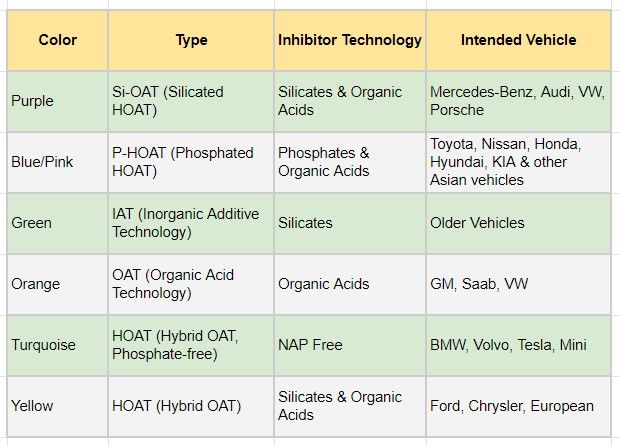
Which one to choose
Not many machines use antifreeze directly anymore. Most engines require a blend of coolant depending on the change in temperature. In most cases, a 50-50 blend will work just fine. For colder regions, however, you may need to increase the coolant concentration up to 80%.
Follow your user manual for selecting the best coolant for your car’s engine. If you don’t have access to the manual, talk to a professional. They will guide you and once you are comfortable doing so, you’ll be able to change the coolant all by yourself.
Safety Implications
For those who want to go DIY, There is a couple of things you should pay attention to. First of all, be careful about the coolant/antifreeze you’re about to buy. Most stores provide both 100% antifreeze and 50% premixed with water. Go through the label carefully before buying.
Your car’s user manual contains the necessary information on the best antifreeze blend for your car. So, it’s really important to go through the manual before selecting the best coolant/antifreeze.
Another thing, although putting a little bit of antifreeze directly in your cooling system won’t damage the machine, it’s best to mix the antifreeze with the appropriate amount of water to prevent damaging the machine down the line.
Of course, you can mix antifreeze with water yourself, but be careful about the amount you’re using and try not to remove the radiator cap or put antifreeze into your system while the engine is hot. The temperature of the coolant can reach up to 200°F, and cause some serious damage to your skin.
FAQs
1. Is antifreeze toxic?
Ans: Yes. Whether it’s pure or diluted, antifreeze is toxic. The ethylene glycol base can harm both animals and humans, and that’s why you need to be extra careful dealing with this. Go through your user manual to find out how to safely dispose of the liquid.
2. Should I replace or refill my Antifreeze/Coolant?
Ans: your coolant should be topped off if the coolant level goes too low. You can check the coolant level from your user manual. In case you want to replace the entire reserve, you’ll need to flush the system to remove all the coolants before refilling.
3. Can I mix pink and blue antifreeze?
Ans: No. You shouldn’t mix coolants of different colors together. Coolants are color-coded for different applications and mixing them together can damage the cooling system and the engine itself. Stick to your user manual.
4. Can I use water in place of coolant?
Ans: Technically, yes. Water does a decent job of cooling your system. However, having a high freezing point and low boiling point, water can create a bunch of unpleasant outcomes. Coolant widens the working temperature range and protects your engine better.


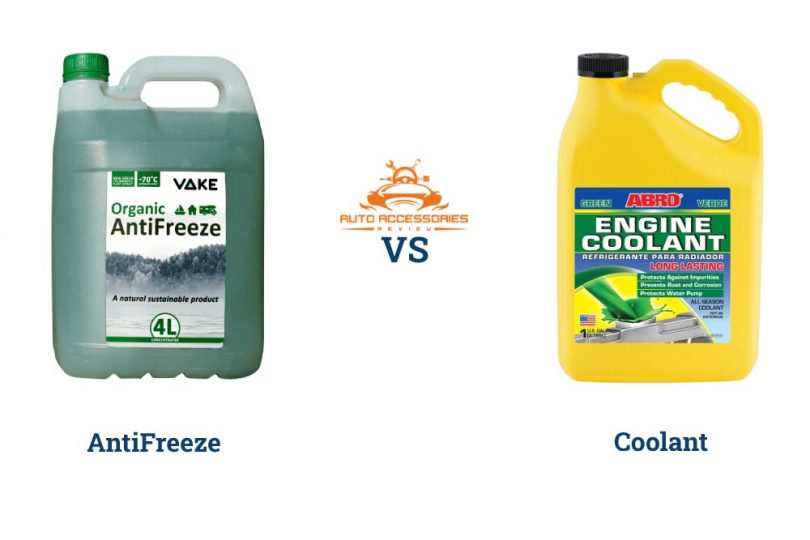
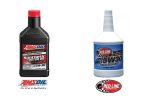
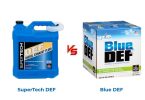





Leave a Comment